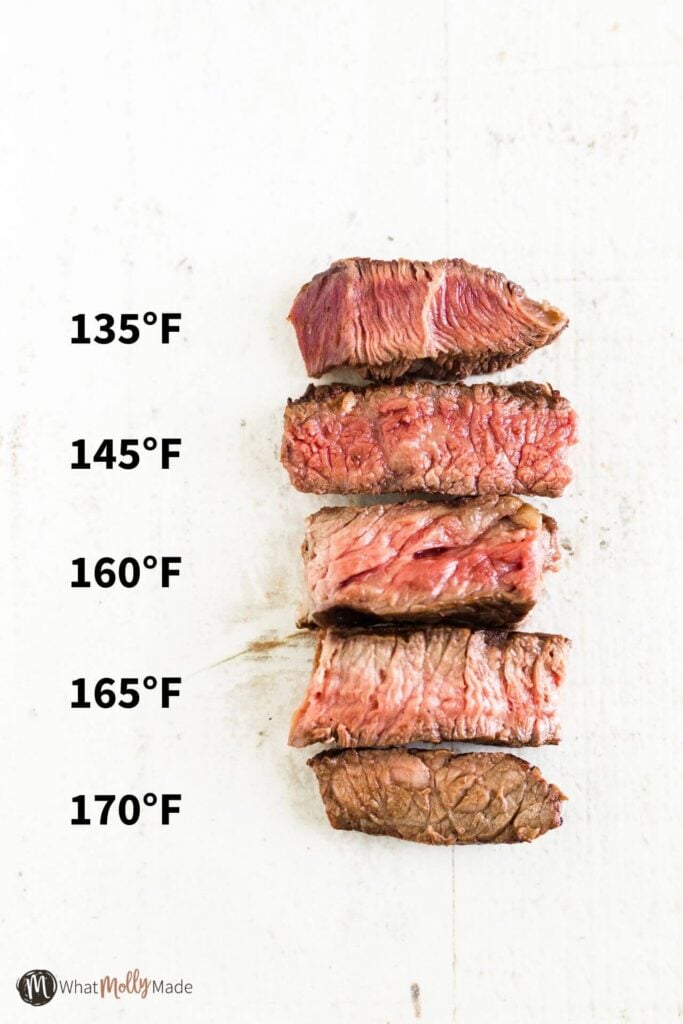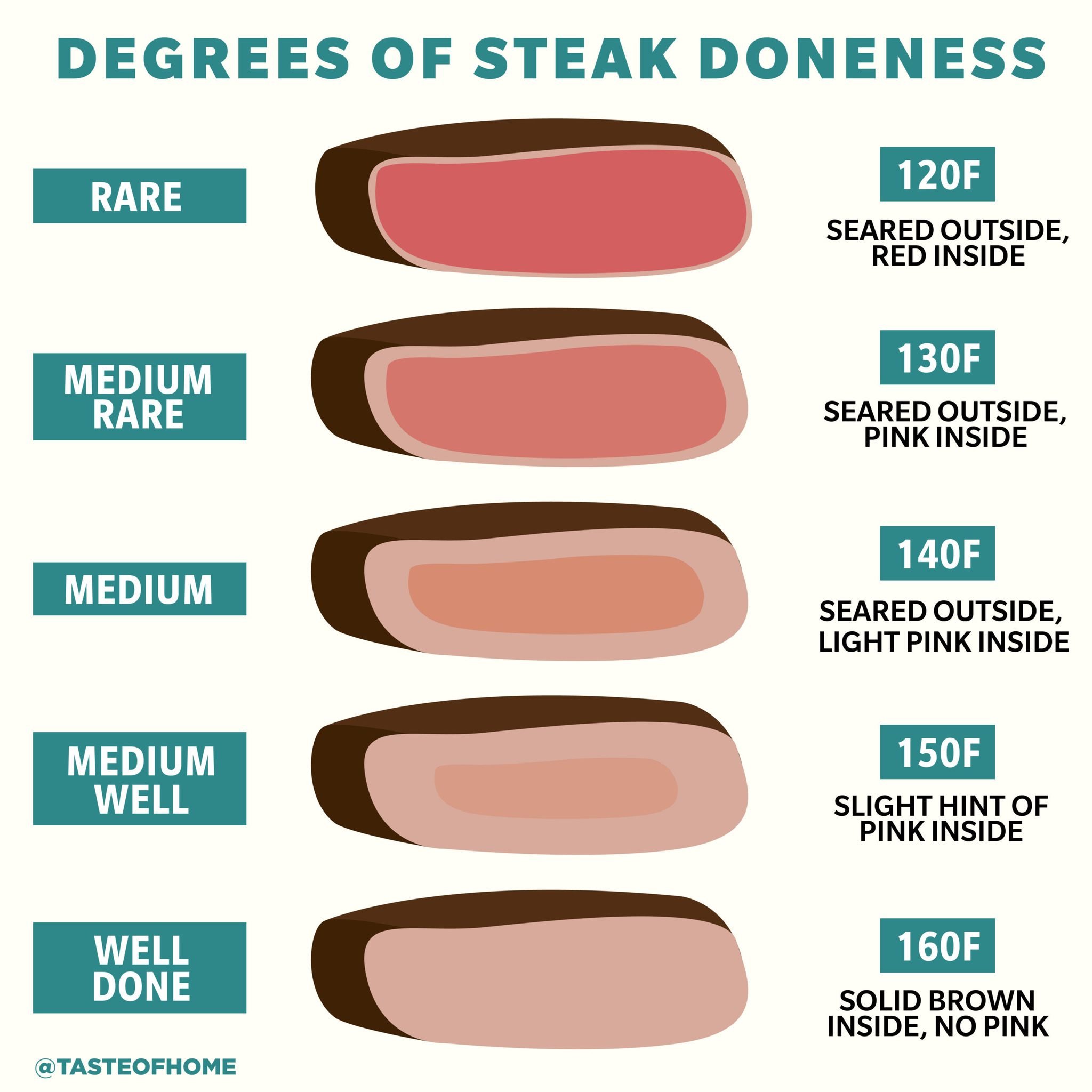What Temperature For Rare Beef: A Comprehensive Guide To Achieving Perfectly Cooked Steak
When it comes to cooking steak, knowing the ideal temperature for rare beef is essential to achieving the perfect doneness. Whether you're a home cook or a professional chef, understanding the nuances of meat temperatures can make a significant difference in the flavor and texture of your dish. Achieving the ideal rare steak temperature requires precision and attention to detail, ensuring that your steak remains tender and juicy.
Many people often wonder, "What temperature should rare beef be?" This question is more common than you might think. The answer lies in understanding how different temperatures affect the meat's internal structure and flavor. By mastering the art of temperature control, you can elevate your cooking skills and consistently produce delicious results.
In this article, we'll delve into everything you need to know about cooking rare beef, including the ideal temperature, methods for achieving perfection, and tips for ensuring your steak is both safe and flavorful. Whether you're a beginner or an experienced cook, this guide will provide valuable insights to enhance your culinary expertise.
Read also:420 Fest Albuquerque A Celebration Of Culture Community And Cannabis
Table of Contents
- What Temperature for Rare Beef?
- Biological Factors Affecting Beef Temperature
- Cooking Methods for Rare Beef
- How to Measure Internal Temperature
- The Importance of Resting Time
- Safety Considerations for Rare Beef
- Tips for Perfectly Cooked Rare Beef
- Common Mistakes to Avoid
- Delicious Rare Beef Recipes
- Conclusion
What Temperature for Rare Beef?
The ideal internal temperature for rare beef is approximately 120°F to 125°F (49°C to 52°C). At this temperature range, the steak retains its bright red color, with a soft and buttery texture that many steak enthusiasts find irresistible. Achieving this temperature requires precise cooking techniques and the use of reliable tools such as meat thermometers.
It's important to note that rare beef should still be safe to consume, provided it has been handled and cooked properly. Understanding the temperature range for rare beef is the first step toward mastering the art of steak cooking.
Variations in Temperature Preferences
While 120°F to 125°F is the standard for rare beef, personal preferences may vary. Some people prefer their steak closer to medium-rare, which falls within the range of 130°F to 135°F (54°C to 57°C). Experimenting with different temperature settings can help you find your ideal level of doneness.
Biological Factors Affecting Beef Temperature
Several biological factors influence how beef responds to heat during cooking. These include the cut of meat, fat content, and marbling. For instance, cuts with higher fat content may require slightly different cooking times to achieve the desired temperature. Understanding these factors can help you adjust your cooking methods accordingly.
Impact of Marbling on Temperature
- Highly marbled cuts like ribeye may cook faster due to their fat content.
- Leaner cuts like sirloin may require longer cooking times to reach the ideal temperature.
- Marbling affects both the flavor and juiciness of the steak.
Cooking Methods for Rare Beef
There are several methods for cooking rare beef, each with its own advantages. Whether you prefer grilling, pan-searing, or using an oven, the key is to maintain consistent heat and monitor the internal temperature closely.
Grilling Rare Beef
Grilling is a popular method for cooking rare beef due to its ability to create a delicious crust while keeping the interior tender. Here are some tips for grilling:
Read also:Luxuria Salon And Spa Olney A Paradise For Ultimate Relaxation And Beauty
- Preheat your grill to high heat before adding the steak.
- Use tongs to flip the steak, avoiding piercing it with a fork.
- Check the internal temperature frequently to avoid overcooking.
How to Measure Internal Temperature
Measuring the internal temperature of your steak is crucial for achieving the perfect level of doneness. Digital meat thermometers are the most accurate tools for this task, providing instant readings that allow you to make adjustments as needed.
Best Practices for Using a Meat Thermometer
- Insert the thermometer into the thickest part of the steak, avoiding any bones or fat.
- Take multiple readings to ensure consistency.
- Calibrate your thermometer regularly to ensure accuracy.
The Importance of Resting Time
After cooking, it's essential to let your steak rest for a few minutes before serving. Resting allows the juices to redistribute throughout the meat, ensuring that your steak remains juicy and flavorful. During this time, the internal temperature may rise slightly, a phenomenon known as "carryover cooking."
Tips for Proper Resting
- Cover the steak loosely with foil to keep it warm.
- Let it rest for about 5-10 minutes, depending on the thickness of the cut.
- Avoid slicing the steak too early, as this can cause the juices to escape.
Safety Considerations for Rare Beef
While rare beef is a popular choice, it's important to ensure that it is safe to consume. Proper handling and storage of raw meat are critical to preventing foodborne illnesses. Additionally, cooking to the recommended temperature can help reduce the risk of contamination.
Safe Handling Practices
- Store raw beef in the refrigerator at or below 40°F (4°C).
- Use separate cutting boards and utensils for raw meat.
- Wash your hands thoroughly after handling raw beef.
Tips for Perfectly Cooked Rare Beef
Here are some additional tips to help you achieve perfectly cooked rare beef every time:
- Season your steak generously with salt and pepper before cooking.
- Let the steak come to room temperature before cooking to ensure even heat distribution.
- Use high-quality oil with a high smoke point, such as avocado or grapeseed oil, for pan-searing.
Common Mistakes to Avoid
Even experienced cooks can make mistakes when cooking rare beef. Here are some common pitfalls to avoid:
- Overcooking the steak, which can lead to a dry and tough texture.
- Flipping the steak too frequently, which can prevent a proper sear from forming.
- Not allowing the steak to rest, which can cause the juices to escape prematurely.
Delicious Rare Beef Recipes
Here are a couple of delicious recipes to try with your perfectly cooked rare beef:
Peppercorn-Crusted Steak
This recipe combines the rich flavor of rare beef with the boldness of cracked peppercorns. Serve it with a side of roasted vegetables for a complete meal.
Herb-Butter Basted Ribeye
For an indulgent treat, try basting your rare ribeye with herb-infused butter. The combination of flavors will take your steak to the next level.
Conclusion
Cooking rare beef to perfection requires a combination of knowledge, skill, and attention to detail. By understanding the ideal temperature for rare beef and following the tips outlined in this guide, you can consistently produce delicious results. Remember to always prioritize food safety and experiment with different methods and recipes to find your perfect steak.
We invite you to share your thoughts and experiences in the comments section below. Have you tried any of the recipes mentioned in this article? What tips do you have for cooking the perfect rare beef? Don't forget to explore our other articles for more culinary inspiration!
References:
- USDA Food Safety and Inspection Service. (2022). Safe Minimum Cooking Temperatures.
- Food Network. (2023). Grilling Tips for Steak.
- Cook's Illustrated. (2021). The Science of Resting Meat.


